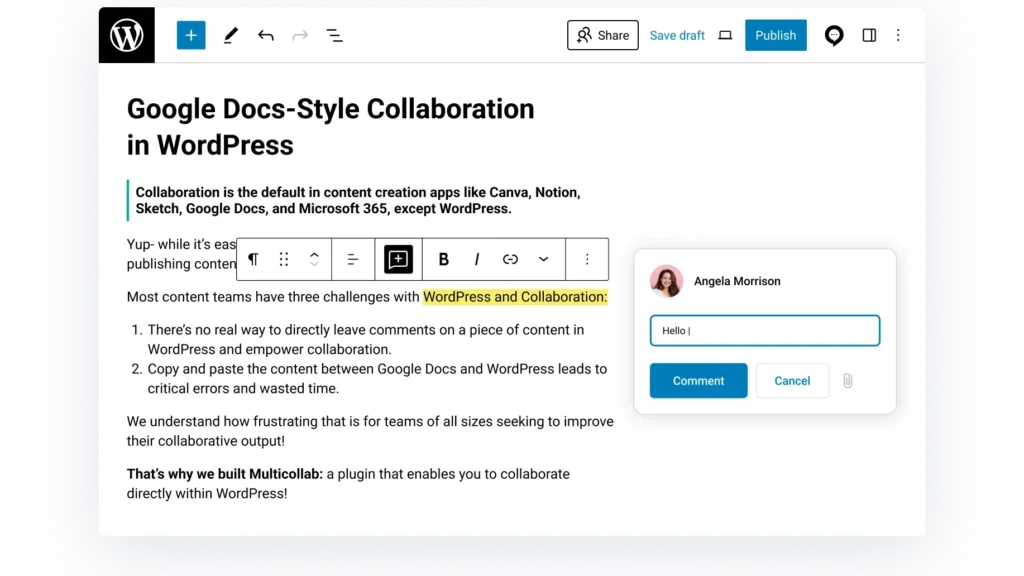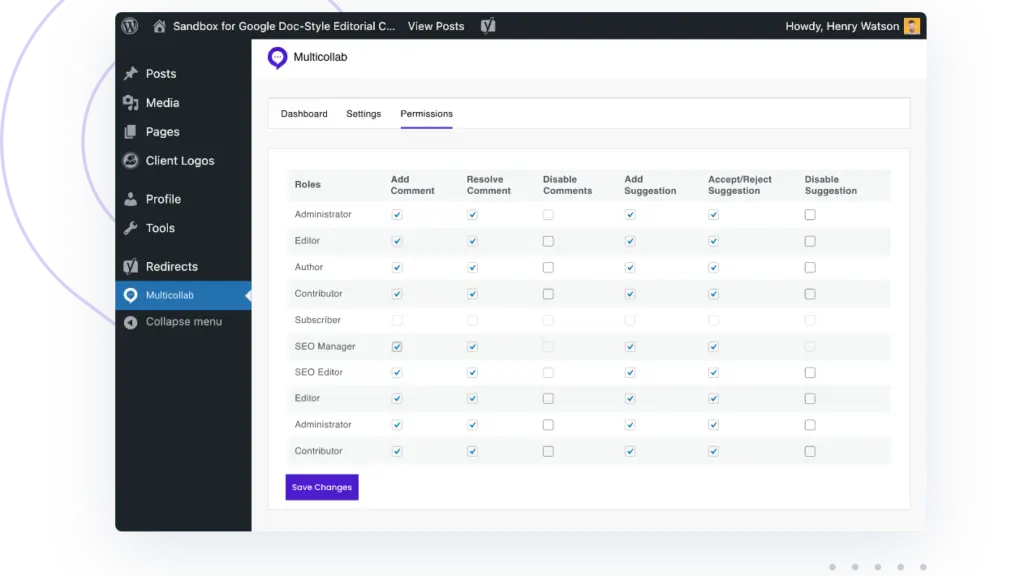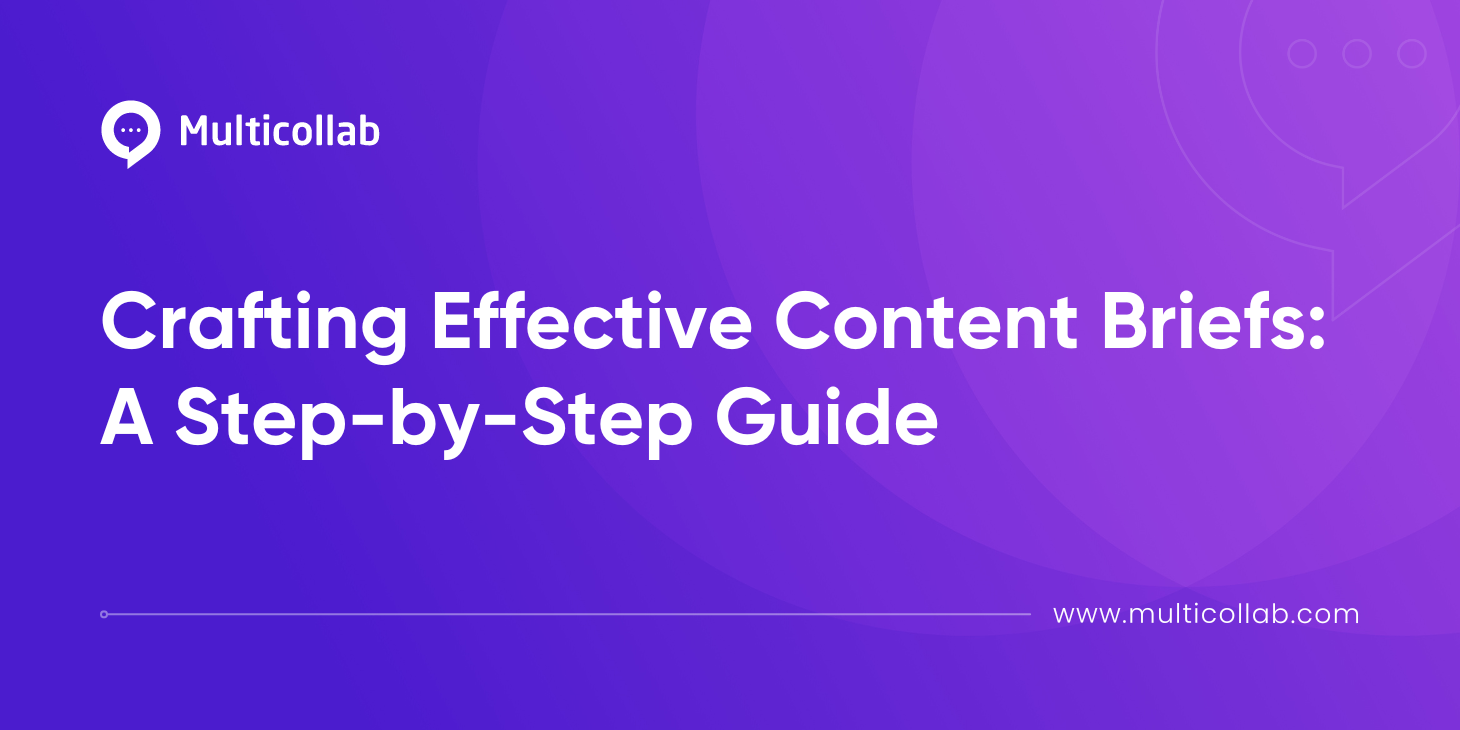Table of Contents
A content brief is an essential tool in any marketing strategy, ensuring all content efforts are coordinated, efficient, and effective in achieving business goals. It acts as a roadmap, aligning your team and streamlining the creation process.
According to recent data, 82.7% of content marketers work with a content brief, highlighting its importance. However, 14.3% of those who don’t use them say it’s because they don’t know how to create one. This article will bridge that gap by explaining the key elements, providing practical examples, and offering actionable tips for crafting effective content briefs.
The Role of a Content Brief in Marketing Strategy
The purpose of a content brief is to provide a clear plan for creating content, ensuring everything aligns with the overall marketing strategy and business goals. It bridges the gap between strategic planning and content creation. By offering clear instructions, a content brief helps creators produce material that resonates with the target audience and achieves desired outcomes. This alignment is crucial for maintaining the coherence and effectiveness of your marketing efforts.
How Beneficial Are Content Briefs?
Consistency
A well-crafted content brief ensures all content maintains a consistent tone, style, and messaging, crucial for brand recognition and trust. When every piece of content follows the same guidelines, your audience can easily recognize and connect with your brand, fostering loyalty and credibility.
Efficiency
Detailed guidelines and expectations in content briefs streamline the content creation process, reducing misunderstandings and revisions. This efficiency saves time and money, allowing your team to focus on creating high-quality content rather than dealing with miscommunication and constant edits.
Alignment
Content briefs ensure that every piece of content aligns with the overall marketing strategy, reinforcing the brand’s objectives and messaging across platforms. This alignment helps in creating a unified brand voice and ensures that all content efforts contribute to the same goals.
Focus
Content briefs help content creators focus on key messages and goals, preventing content from straying off-topic or diluting the brand’s core message. They also ensure that crucial points aren’t missed, maintaining the integrity and impact of your content.
SEO
A well-crafted content brief helps in aligning content with SEO goals, ensuring better search engine rankings and visibility. By incorporating target keywords, meta descriptions, and other SEO elements, content briefs make sure your content is optimized for search engines right from the start.
Measurable Results
By defining specific goals and metrics within the brief, it becomes easier to measure the effectiveness of the content. These measurable results help in assessing what works and what doesn’t, allowing for continuous improvement and better ROI on your content efforts.
Collaboration
Content briefs facilitate better productivity and collaboration between marketers, content creators, designers, and other stakeholders by providing a clear reference point for all involved. This shared understanding ensures everyone is on the same page, enhancing teamwork and the quality of the final output.
Key Elements of an Effective Content Brief
1. Title and Meta Description
While a meta description and title are essential for SEO, they also provide crucial context for your writers before they begin work. Craft a compelling and SEO-friendly title that captures the essence of the content. It’s recommended to keep it under 60 characters to display well in search results. Providing several working examples can be helpful.
Title: Write a captivating and keyword-rich title. Example: “The Ultimate Guide to Crafting Effective Content Briefs.”
Meta Description: Write a concise summary of the content, including primary keywords. Keep it within 155–160 characters to ensure it displays well in search results. Example: “Learn how to create comprehensive content briefs that enhance productivity and SEO alignment. Explore this step-by-step guide with examples.”
Use tools like ToTheWeb to test page title and meta description length.
2. Explain the Goal
Defining the goal of the content helps content creators understand what is expected of them. It provides a focus and ensures that the produced content serves a specific purpose and contributes to the overall marketing strategy.
Define the Objective: Clearly state the primary objective of the content or highlight the main messages that the content should convey. Example: “The goal of this article is to educate content creators and marketers on how to craft effective content briefs that improve workflow and align with SEO strategies.”
Desired Outcome: Define what success looks like – whether it’s increased traffic, higher engagement, lead generation, or educating the audience about a new product or service.
3. Content Type
Specifying the type of blog post in a content brief provides clear direction and structure for the writer. It enhances creativity, improves content quality, and ensures that each post serves its intended purpose effectively.
Example: For blogs and articles aimed at providing valuable information to the target audience, specify in your brief if you want a how-to guide, step-by-step tutorial, listicle, case study, comparison piece, or long-form ultimate guide article. It’s also worth noting if it requires infographics.
Word Count: Specify the target word count for the content. This helps guide the reader on section and article length to ensure it doesn’t over-run or over-simplify.
4. Product Fit and Reference Materials
Provide information on how the content fits within the product or service being offered, and include any reference materials that should be used.
Product Alignment: Explain how the content supports the product’s features, benefits, and overall value proposition. Example: “Educating the audience about creating an effective content strategy could be linked to a paid course on creating a professional content brief.”
Reference Materials: List any documents, articles, or resources that should be referenced or included in the content. This could include product manuals, case studies, or industry reports.
5. Define Your Target Audience, Reading Grade, and Funnel Stage
Clearly define the content’s target audience, the appropriate reading grade level, and the stage of the marketing funnel it is aimed at.
Target Audience: Describe the demographics, location/language, interests, and pain points of the target audience. Example: “Target audience: Small business owners, marketing professionals, and content creators aged 25–45. Pain points: Creating effective content briefs and ensuring consistent content quality. Goals: Improve content creation processes and enhance marketing strategy effectiveness.”
Reading Grade: Specify the reading grade level to ensure the content is accessible and easily understood by the target audience (e.g., 8th grade, college level). Example: “Reading grade: 8th to 10th-grade reading level. Clear, straightforward language. Avoid overly technical jargon.”
Funnel Stage: Identify the stage of the marketing funnel (awareness, consideration, decision) the content is targeting. Example: “Funnel stage: Middle of the Funnel (MOFU). Provide detailed, actionable advice on creating effective content briefs.”
6. SEO: Keywords and Link Suggestions
Provide primary and secondary keywords to be included in the content, along with suggestions for internal and external links.
Primary Keywords: List the main keywords the content should focus on to improve SEO. Example: “Primary keyword: Content brief.”
Secondary Keywords: Include related keywords and topics to support the primary keywords and enhance SEO. Example: “Secondary keyword: Content marketing.”
Link Suggestions: Suggest internal links to other relevant content on the website and external links to authoritative sources. Example: “Internal links: Multicollab Blog. External links: State of Content Ops & Outsourcing report.“
7. Heading Structure or Outline
Provide a suggested heading structure or outline for the content to ensure it is well-organized and easy to read.
Heading Structure: Provide a clear hierarchy of headings (H1, H2, H3) to organize the content logically. Example:
- H1: The Ultimate Guide to Crafting Effective Content Briefs
- (Introduction)
- H2: What is a content brief?
- H3: Importance of content briefs
- H2: Key elements of a content brief
- H2: Examples of effective content briefs
- H2: Conclusion
Outline: Offer a detailed outline of the main points to be covered in each section of the content.
8. Brand Voice and Style Guide
Outline the tone and voice to be used in the content to ensure brand consistency.
Brand Voice: Describe the brand’s voice (e.g., formal, authoritative, friendly, professional) and how it should be reflected in the content. Example: “The brand voice should be authoritative yet friendly.”
Style Guide: Include any specific style guidelines, such as preferred terminology, formatting rules, and writing style. Example: “Follow the MC style guide for grammar and punctuation.” Note: Provide a link or attachment to ensure it is easy to find.
9. Competitors
Identify key competitors and provide examples of their content to help inform and differentiate the content being created.
Competitor Analysis: List key competitors and provide links to their content for benchmarking. Example: “Include links to competitor content that is relevant to the topic being covered, i.e., HubSpot.”
Benefits: Analyzing competitor content helps identify gaps and opportunities, benchmark quality and depth, understand audience preferences, identify content formats and styles, and uncover keyword and linking opportunities.
10. Research and Statistics
Provide relevant research and statistics to support the content and add credibility.
Relevant Research: Include links to research studies, industry reports, and credible sources that support the content. Example: “Use statistics from Content Marketing Institute and Statista to support claims.”
Statistics: Provide up-to-date statistics that are relevant to the topic and help to strengthen the content’s arguments.
11. CTA (Call to Action)
Specify the calls-to-action (CTAs) to be included in the content to guide the reader towards the desired action.
Primary CTA: The main action you want the reader to take. Example: “Encourage readers to download the template, sign up for a workshop, or contact your company for a consultation.”
Example CTA: “Download our free content brief strategy guide.”
12. Deadline and Milestones
Provide practical details to ensure the content is delivered on time and meets the required specifications.
Deadline: Provide a clear deadline for when the content should be completed and submitted. Example: “Deadline: September 30, 2024.”
Milestones: Key dates for drafts, reviews, and final submissions.
Review Process: Identify who is responsible for editing, reviewing, and approving content.
Utilizing Tools for Brief and Content Creation
Using tools for brief and content creation significantly enhances collaboration, productivity, and alignment with SEO and business objectives. Tools like Content Harmony provide structured templates for creating content briefs, including AI-driven keyword extraction, content outlines, and competitive analysis.
These tools simplify the process of creating detailed content briefs with built-in SEO and research tools. For those who prefer full control over their content briefs and content creation, collaborative tools streamline the process by enabling efficient communication and cohesive workflows.
Streamline the Process with Multicollab
Content brief creation often faces challenges such as disjointed communication, inefficient workflows, and inconsistency. Multicollab, a comprehensive content collaboration plugin designed for WordPress users, addresses these pain points effectively. Its primary purpose is to streamline content creation workflows, enhance collaboration, and improve productivity. Let’s explore some of the plugin’s key features:
Real-time Collaborative Editing: This feature allows multiple users to work simultaneously on WordPress posts, pages, and other content assets, fostering a more dynamic and cohesive creation process.
In-line Commenting and Suggestions: Team members can leave comments and suggestions directly within the content, facilitating effective feedback and ensuring content quality and consistency. This in-line commenting helps clarify instructions and expectations, reduces the need for revisions, and ensures alignment with SEO and business objectives.

Slack and Email Notifications: Keep content team members informed about updates and improve communication with automatic Slack and email notifications. These ensure the team stays aligned and aware of deadlines and updates, enhancing overall productivity.
User Permission Control: This feature enables precise management of access levels for internal and guest collaborators, ensuring that the right people have the right level of access.

Activity Timelines: Tracking progress and changes ensures transparency and accountability within the team.
Gains from Using Multicollab:
Improved Content Quality: By enabling real-time collaboration and effective feedback mechanisms, Multicollab enhances the overall quality of content produced.
Enhanced Team Collaboration: The platform’s collaborative features streamline communication and teamwork, leading to more efficient content creation processes.
Reduced Time Spent on Revisions: With clear instructions and in-line commenting, the need for revisions is minimized, saving valuable time.
Better Alignment with Marketing Goals and SEO Strategies: The comprehensive features of Multicollab ensure that content creation is always aligned with broader marketing and SEO objectives.
By incorporating Multicollab into their content creation process, content teams can significantly improve productivity, collaboration, and content quality, leading to more effective marketing strategies and better business outcomes.
Take Your Content to the Next Level with Content Briefs and Multicollab
By following the steps outlined in this article, content teams can collaborate effectively to create comprehensive content briefs that ensure every piece of content is purposeful, efficient, and aligned with broader marketing goals.
To assist you further, we have provided a downloadable Multicollab template, illustrating how effective content briefs can be structured.
Using Multicollab for content brief creation streamlines workflows, enhances team productivity, and ensures a cohesive content strategy. So, go ahead and explore Multicollab and all its features to transform your content workflows and boost team productivity.








